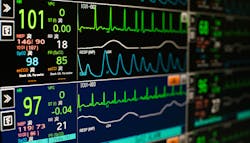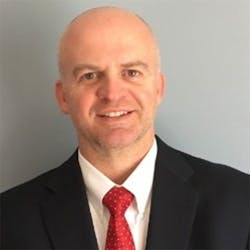Patient monitoring broadly falls into many buckets. On one hand, it could involve tracking the volume of patients coming into hospitals and healthcare systems, as well as the supplies and equipment needed to provide care. On the other hand, it may encompass the actual devices, accessories and technology that measure the vital signs and health conditions of patients, whether they are in care on-site, at home, or out in the community.
The COVID-19 crisis unexpectedly hit the healthcare industry as never experienced before. Elective surgeries and other care have declined, resulting in decreased revenue and a sharper focus on managing healthcare inventory and purchasing. In addition, the pandemic and fear of its spread have elevated various methods of care delivery, such as remote patient monitoring, mobile workflows, telehealth, and medical telemetry.
Measuring supplies, equipment, and care
“One of the hallmarks of healthcare is that hospital administrators have three levers to pull from,” Pridgen indicated. “You could use time, resources, and tools. Systems that are used to monitor all three have given line of sight into trends to become proactive in their response to the COVID-19 pandemic. We know that surgical procedures, a significant source of funding for hospitals, have substantially decreased since the beginning of March. Insurance reimbursement models have changed, dollars are more scrutinized, and there is more pressure on administrators and providers. They are looking to their patient monitoring systems to help improve efficiency, reduce waste, and improve outcomes.”
The expectation of high-quality healthcare experiences requires visibility, integration, proactiveness, and optimization for effective care delivery, expressed Pridgen.
“Now, it’s quality-based healthcare,” he explained. “How, in real time, can we figure out what patients have and get them appropriate care? What we find is that hospitals have tried to supplement an EMR and tools that aren’t connected. We take our charge seriously to help integrate these things together.”
The pandemic, consequently, reinforces an even higher level of attention needed with transparency and management of supplies, noted Pridgen.
“The challenge we run into, whether we are talking about COVID, antibiotic-resistance or healthcare- associated infections, is we try to put them in a silo,” he continued. “You need to have a full picture. How do you make sure you have appropriate staff, meds, and laboratory testing? Today it’s COVID, but tomorrow it will be something else. Adaptability and agility in these processes are critical.”
Higher costing and single-use medical products also are impacting medical care and spending today, addresses Nora Brennan, Business Development Manager, Cables & Sensors.
“There are ever-increasing costs of supplies and supply chain interruptions,” Brennan emphasized. “There is an increased focus on single-use disposable items to lessen the chance of possible infections, which could compromise patients’ health and make them more susceptible to COVID-19. Remote monitoring, in particular, has made great progress. Costs of the peripherals used to perform the monitoring at the remote location need to be considered.”
“Patient monitoring purchases typically are a very strategic acquisition, with detailed evaluations, cyber-security discussions, and financial simulations,” Karchner expressed. “With COVID-19, many of these projects have been put on hold. COVID-19 is providing a financial strain on our health system that we’ve never seen in our lifetimes. Healthcare organizations are focused more than ever on improving operational efficiencies. Infinity OneNet, our innovative networking solution that enables life-critical patient data to be sent and received safely and securely over the hospital’s existing hospital network, reduces the need to invest in a separate monitoring network.”
Achieving connectivity, automated data, and mobility
“Despite increasing usage of patient monitoring systems, there are still various challenges and technology-related issues faced by hospitals and healthcare facilities,” Kate noted. “Major challenges faced by hospitals while using remote patient monitoring systems are network connectivity, data security, cost and affordability, data manipulation and violation of patient data.”
Real-time access of patient health data through automated and mobile devices and work practices can help improve accuracy and quality in patient care, indicates Kylie Gilberg, Marketing Manager, Midmark Corporation.
The Midmark Digital Vital Signs Device provides automated and integrated data for patients. “Our device introduces technology and standardized workflows to help ensure vital sign measurements are being performed consistently, every time a patient is seen,” Gilberg shared. “Studies show that automating the vital signs acquisition process can save 69 seconds per patient visit.2 The device’s ability to connect directly with an EMR and automatically transfer the patient’s results eliminates the possibility of transcription errors.”
While Dräger’s Pick and Go monitoring technology offers data at the bedside and in transport, helping to stay with the patient and decrease the risk of pathogen or infection spread. “Our patented Pick and Go focuses on the value for cost savings and operational efficiency, where hospitals could reduce the number of monitors needed across their network,” Karchner explained. “What we’ve found during the COVID-19 pandemic is that our customers also are finding comfort from an infection control standpoint, since a patient can be placed on a monitor at their entry point into the health system, and move from the ER, to OR, to PACU, to ICU, all on that same monitor, helping hospitals reduce the opportunity for cross contamination between patients.”
Jake Durgan, Vice President of Marketing, Spacelabs Healthcare, likewise, points to the adaptability of patient monitoring technology and care settings, data reporting and operational efficiencies.
“Remote monitoring and equipment that is quickly configurable for any situation has become critically important,” Durgan addressed. “Today, virtually any department in the hospital can be turned into an ICU because our patient monitors can operate like an ICU bed monitor, which allows coronavirus patients to be treated as such, no matter how much the needs of the hospital keep fluctuating. Today’s technology allows us to capture more data from more data points than ever before and make that data available on remote and handheld devices. The real challenge is what to do with all that data.”
In order to improve the management, efficiency, outcomes, and costs with their telemetry process, Integris Southwest Medical Center implemented Spacelabs Healthcare’s cloud-based SafeNSound software, which “leverages digital technology by providing tools that assist with alarm management, ensuring that devices are properly associated to the correct patients, and adding dashboards that facilitate collaboration between caregivers while streamlining communications,” he added. “During the first year of use, Integris recognized more than $900,000 in savings.”
Advancing remote monitoring, reporting, and telehealth
As patient health data is collected, it must then be shared and applied in order to benefit clinical practice and decisions, emphasized Karchner.
“There is a popular saying in the market right now that ‘data is the new gold,’ and we couldn’t agree more,” he noted. “But data is only valuable if the data can be acquired correctly and presented in a format where health systems can more easily make informed decisions. Research has shown that on average, up to 350 monitoring alarms a day can occur at an intensive care bed. Of these alarms, up to 95 percent are clinically irrelevant and the remaining clinical alarms are only noticed properly by a rate of 50 percent.3 Dräger is focused on using data analytics to help our customers remove the noise from nuisance alarms, freeing them up to better focus on their patients.”
“Medicare and Medicaid, as well as other insurance companies, now are receiving reimbursement for remote patient monitoring (RPM),” Kivatinos indicated. “Additionally, Apple Watch and internet-connected scales can be used for RPM. IoT devices also are part of the RPM future, such as IoT glucose meters for diabetic patients, IoT thermometers, and sleep monitoring devices, like the Aura Ring. By adding RPM from providers, such as KeepWell, 100Plus, and MD Revolution, practices can focus on patient care and have access to real-time patient data. With more physicians turning to virtual care, telehealth, and EHRs that manage critical patient data, these are proving to be the lifelines to modern healthcare.”
Remote patient monitoring and telehealth will experience continued growth beyond the COVID-19 pandemic, predicts Kate.
“Remote patient monitoring is going to witness exponential growth in the coming years, as it will help people living in inaccessible areas to access healthcare services, improve efficiency, and reduce the inconvenience of stringent medication regimes. In fact, the number of telehealth patient visits has increased around 50-175 times during the pandemic as remote patient monitoring technology keeps patients safe within the home, while reducing stress on hospitals and frontline healthcare workers.”
Atrius Health, for example, is using the remote monitoring solution, Glooko, for tracking the health status of patients with diabetes, continued Kate.
“Glooko is a diabetes management system that enables PWDs and their healthcare team to access all their diabetes data in a central location via a mobile and web application,” he explained. “Atrius Health uses Glooko to provide optimal care and also to encourage patients to share health and wellness data captured at home, such as diet, activity, blood pressure, etc., with their clinicians so the data can be used to inform treatment decisions.”
Mobile workflow, telehealth, and home-based monitoring systems also will be on the rise, forecasts Gilberg.
“We feel there will continue to be a push toward mobile workflow solutions that allow our customers increased flexibility within their clinics,” she expressed. “We anticipate there will be more telehealth and at-home vital signs solutions introduced to the market based on feedback gathered during the pandemic. The pandemic has been a driving force to bring the point of care to our homes, and with a better understanding of what’s needed to do that, at-home care may be a long-term solution.”
Durgan foresees an expansion of wearable trackers and medical telemetry to provide monitoring outside of medical settings and keep patients moving.
“Physiological monitors are no longer just a hospital monitor used to ensure a patient is stable. Today’s innovations in lightweight wearable transmitters encourage monitoring early at home, allowing unencumbered ambulation. Getting a patient up and walking—even after something as dramatic as open-heart surgery—is essential. Physical activity is critically important to achieve the fastest, fullest recovery. The future is taking this capability beyond the clinical environment and into the everyday world. Medical telemetry delivers the stringent level of diagnostic quality required to ensure that data collected on the go is as accurate as data collected in the ICU.”
References
- Fieler, V. K., Jaglowski, T., & Richards, K. (2013). Eliminating errors in vital signs documentation. Comput Inform Nurs, 31(9), 422-427; quiz 428-429.doi:10097/01. NCN.0000432125.61526.27 PMID:24080751
- Comparing Automated Office Blood Pressure Readings With Other Methods of Blood Pressure Measurement for Identifying Patients With Possible Hypertension: A Systematic Review and Meta-analysis, National Library of Medicine, National Center for Biotechnology Information, https://pubmed.ncbi.nlm.nih.gov/30715088/
- Association for the Advancement of Medical Instrumentation (2011). Clinical Alarms. 2011 Summit
About the Author

Ebony Smith
Ebony Smith was previously Managing Editor for Healthcare Purchasing News.






